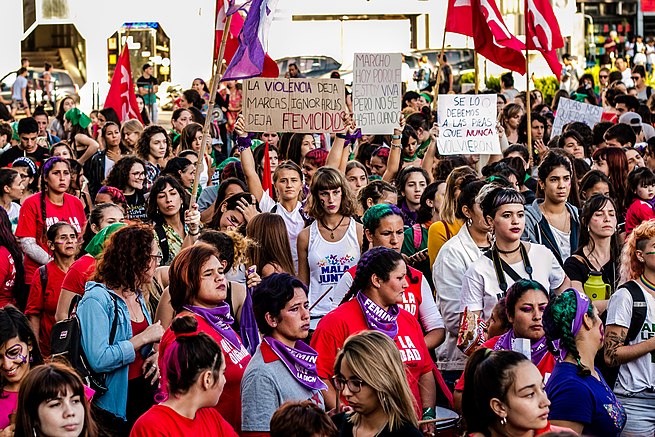
Main Difference
The main difference between Feminism and Gender Equality is that the Feminism is a collection of movements and ideologies aimed at defining, establishing, and defending gender equality, including equal rights for women and girls and Gender Equality is a state of equal ease of access to resources and opportunities regardless of gender, including economic participation and decision-making
-
Feminism
Feminism is a range of social movements, political movements, and ideologies that aim to define, establish, and achieve the political, economic, personal, and social equality of the sexes. Feminism incorporates the position that societies prioritize the male point of view, and that women are treated unfairly within those societies. Efforts to change that include fighting gender stereotypes and seeking to establish educational and professional opportunities for women that are equal to those for men.
Feminist movements have campaigned and continue to campaign for women’s rights, including the right to vote, to hold public office, to work, to earn fair wages, equal pay and eliminate the gender pay gap, to own property, to receive education, to enter contracts, to have equal rights within marriage, and to have maternity leave. Feminists have also worked to ensure access to legal abortions and social integration and to protect women and girls from rape, sexual harassment, and domestic violence. Changes in dress and acceptable physical activity have often been part of feminist movements.Some scholars consider feminist campaigns to be a main force behind major historical societal changes for women’s rights, particularly in the West, where they are near-universally credited with achieving women’s suffrage, gender-neutral language, reproductive rights for women (including access to contraceptives and abortion), and the right to enter into contracts and own property. Although feminist advocacy is, and has been, mainly focused on women’s rights, some feminists, including bell hooks, argue for the inclusion of men’s liberation within its aims, because they believe that men are also harmed by traditional gender roles.Feminist theory, which emerged from feminist movements, aims to understand the nature of gender inequality by examining women’s social roles and lived experience; it has developed theories in a variety of disciplines in order to respond to issues concerning gender.Numerous feminist movements and ideologies have developed over the years and represent different viewpoints and aims. Some forms of feminism have been criticized for taking into account only white, middle class, and college-educated perspectives. This criticism led to the creation of ethnically specific or multicultural forms of feminism, including black feminism and intersectional feminism.
-
Gender Equality
Gender equality, also known as sexual equality or equality of the sexes, is the state of equal ease of access to resources and opportunities regardless of gender, including economic participation and decision-making; and the state of valuing different behaviors, aspirations and needs equally, regardless of gender.
Gender equality is the goal, while gender neutrality and gender equity are practices and ways of thinking that help in achieving the goal. Gender parity, which is used to measure gender balance in a given situation, can aid in achieving gender equality but is not the goal in and of itself. Gender equality is more than equal representation, it is strongly tied to women’s rights, and often requires policy changes. As of 2017, the global movement for gender equality has not incorporated the proposition of genders besides women and men, or gender identities outside of the gender binary.
UNICEF says gender equality “means that women and men, and girls and boys, enjoy the same rights, resources, opportunities and protections. It does not require that girls and boys, or women and men, be the same, or that they be treated exactly alike.”On a global scale, achieving gender equality also requires eliminating harmful practices against women and girls, including sex trafficking, femicide, wartime sexual violence, gender wage gap, and other oppression tactics. UNFPA stated that, “despite many international agreements affirming their human rights, women are still much more likely than men to be poor and illiterate. They have less access to property ownership, credit, training and employment. This partly stems from the archaic stereotypes of women being labelled as child-bearers and home makers, rather than the bread winners of the family. They are far less likely than men to be politically active and far more likely to be victims of domestic violence.”As of 2017, gender equality is the fifth of seventeen sustainable development goals (SDG 5) of the United Nations. Gender inequality is measured annually by the United Nations Development Programme’s Human Development Reports.
-
Feminism (noun)
The state of being feminine; femininity. from 1851; less common after 1895
-
Feminism (noun)
A social theory or political women must be removed in order to bring about equality of the sexes in all aspects of public and private life.
